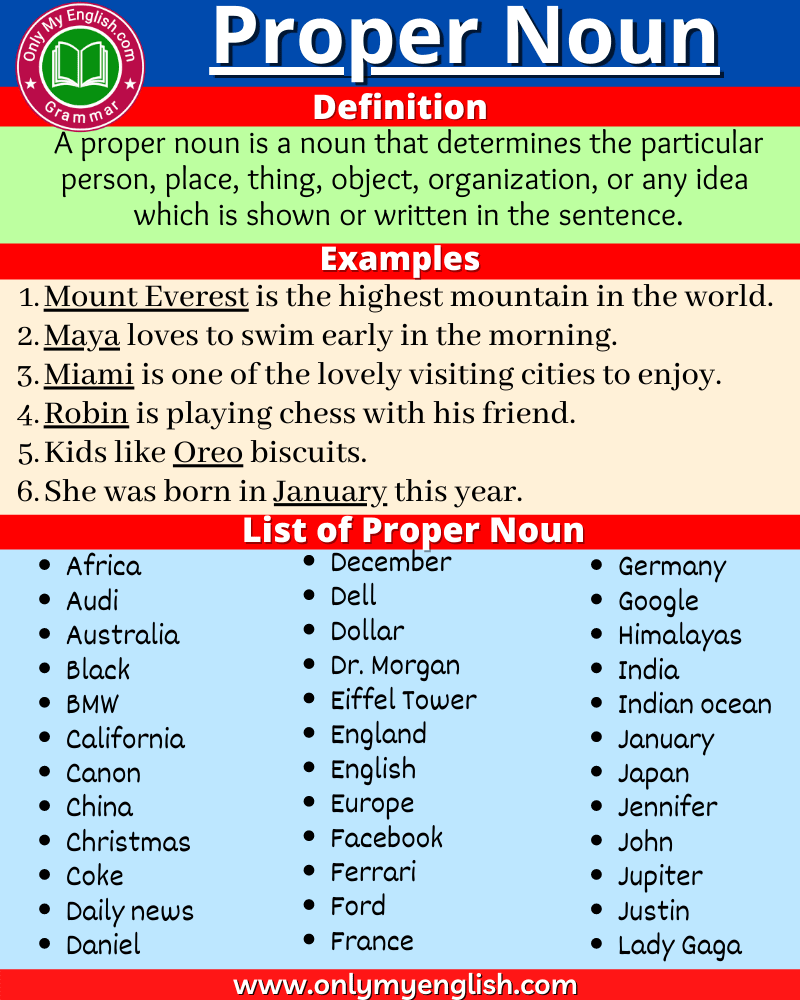Proper nouns are an essential part of the English language. They are used to name specific people, places, organizations, and things. Proper nouns always begin with a capital letter, unlike common nouns. Understanding the difference between proper and common nouns is crucial for effective communication.
Proper nouns help to distinguish one person, place, or thing from another. For example, “Mary” is a proper noun that refers to a specific individual, whereas “girl” is a common noun that can refer to any female. By using proper nouns, we can provide clarity and specificity in our language.
What are Proper Nouns?
Proper nouns are names that are used to identify specific entities. They can include names of people (e.g., John, Sarah), places (e.g., Paris, New York), organizations (e.g., Google, Microsoft), and things (e.g., The Eiffel Tower, The White House). Proper nouns always start with a capital letter, regardless of their position in a sentence.
Proper nouns play a crucial role in creating a sense of uniqueness and individuality. They help us to distinguish between different entities and avoid confusion. For example, saying “I visited Paris” is more specific than saying “I visited a city.” The proper noun “Paris” provides clarity and context to the statement.
It is important to remember that proper nouns can also include titles and specific dates. For example, “President Biden” and “Independence Day” are both proper nouns. These names are unique and specific, requiring a capital letter at the beginning of each word.
Proper nouns are commonly used in written and spoken language to provide specific details and references. They add depth and precision to our communication, allowing us to convey information accurately. By recognizing and using proper nouns effectively, we can enhance the clarity and impact of our words.
In conclusion, proper nouns are essential components of language that help us to identify and distinguish specific entities. By using proper nouns, we can provide clarity, specificity, and context to our communication. Understanding the role of proper nouns in language is key to effective writing and speaking.
